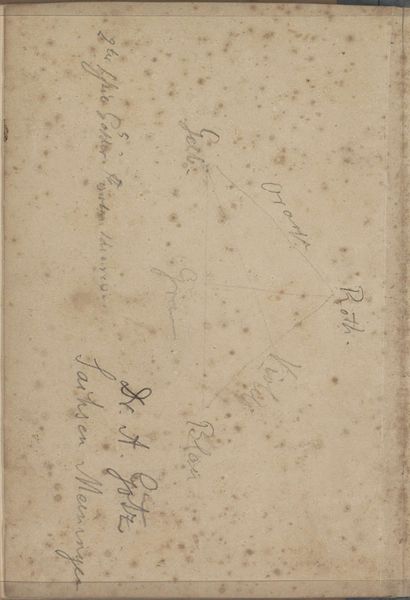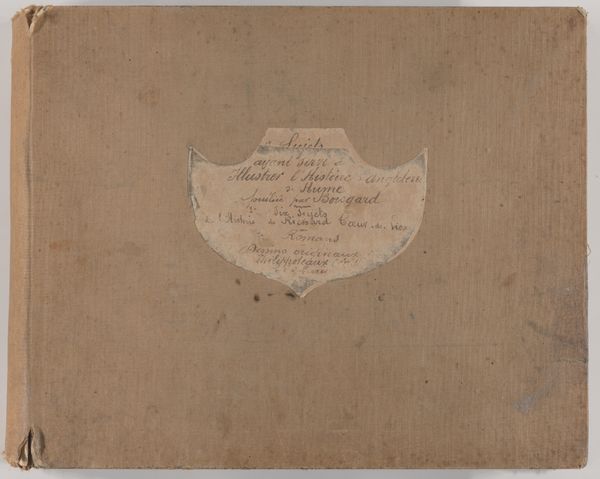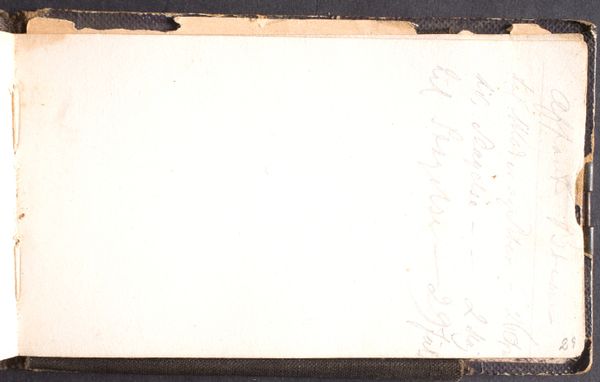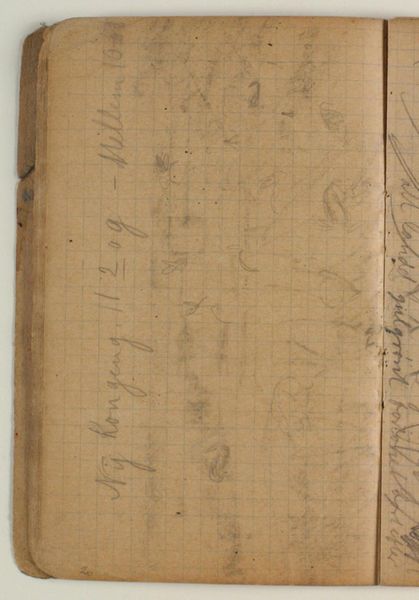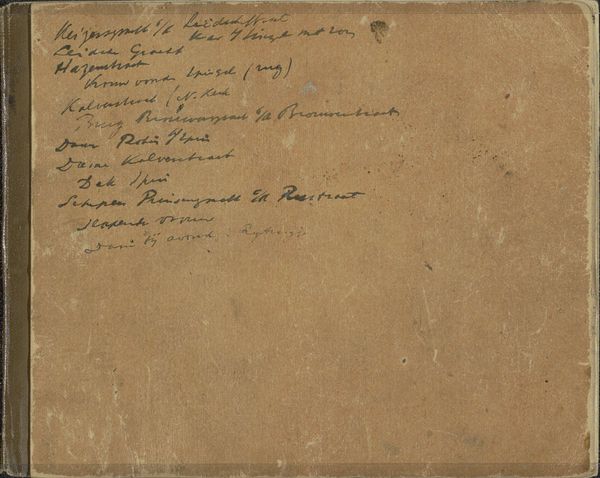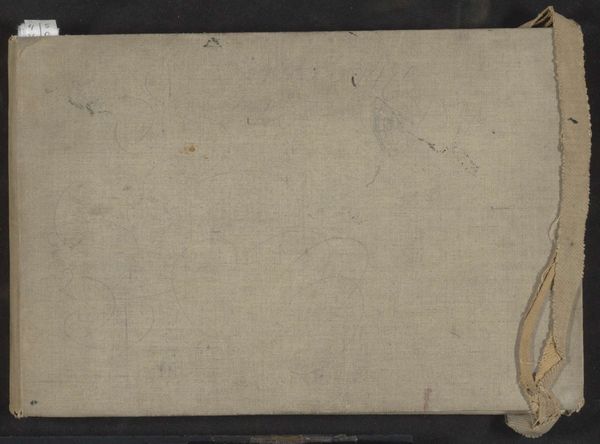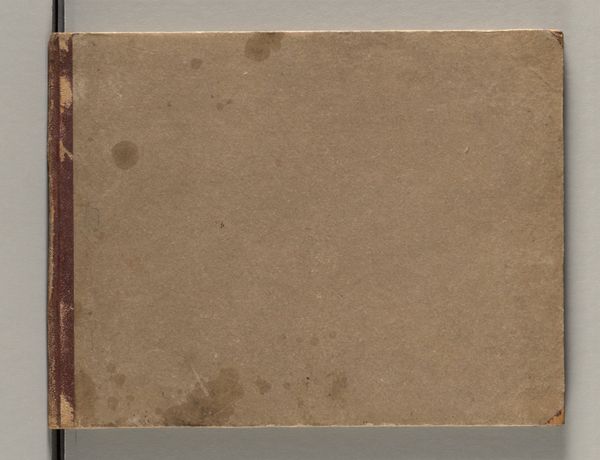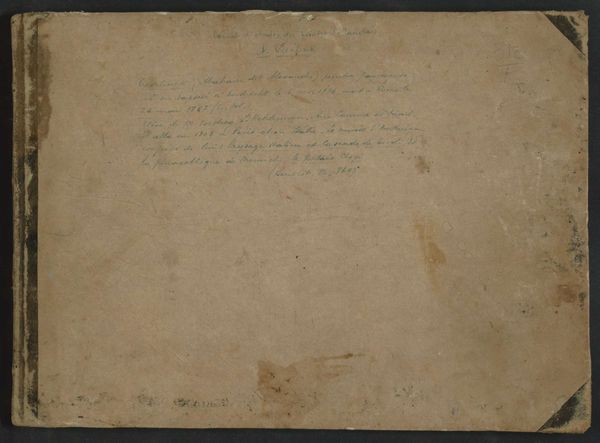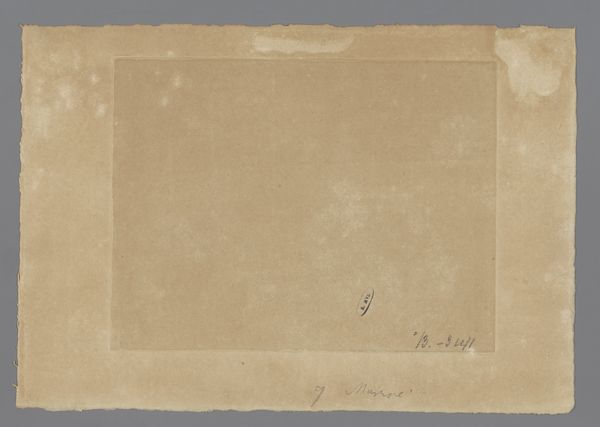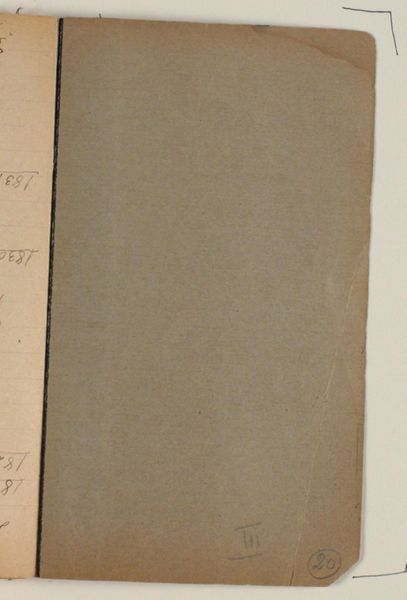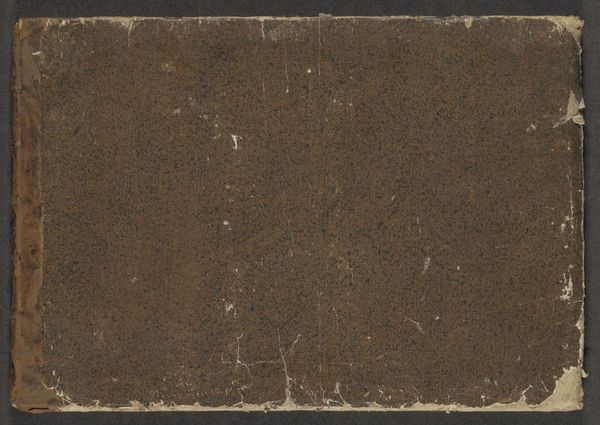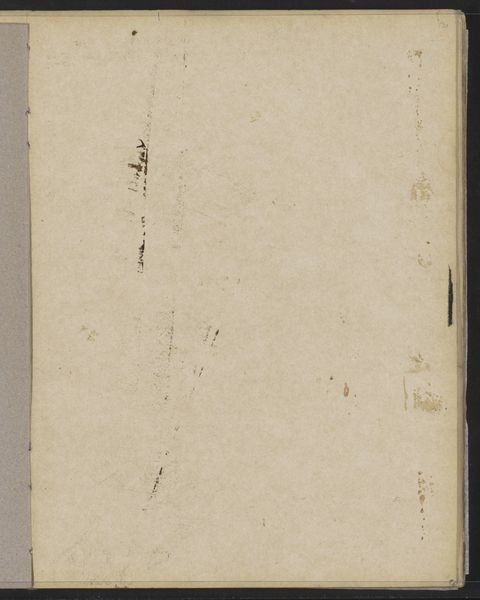
drawing, paper, ink
#
drawing
#
dutch-golden-age
#
paper
#
ink
#
street
#
watercolor
Dimensions: height 129 mm, width 160 mm, thickness 7 mm, width 326 mm
Copyright: Rijks Museum: Open Domain
Curator: So, here we have what's known as "Sketchbook with 32 pages" by George Hendrik Breitner, dating from around the 1890s to early 1900s. It's currently held here at the Rijksmuseum. What's your immediate take on it? Editor: It looks almost like a well-loved ledger, more about accounting than art. You get a sense that each page records something precise, or useful at least. You know, in terms of raw materials, it's the ink and paper—pretty basic. Do we know anything more about it? Curator: Well, Breitner was known for capturing street life. Imagine him, sketchbook in hand, recording scenes. He seemed to embrace the city, you can almost see the city reflected back to him in its use, worn look and feel, capturing movement. I find myself thinking about the fleeting moments he aimed to catch on these pages. Editor: True, the act of capturing glimpses, that’s always about time and labour. The very quick marks with the ink imply a real economy of means – the book wasn't for display! More a portable workspace. Did he make preliminary studies of particular drawings here before committing to larger works? Curator: It seems likely! There's something so vulnerable and raw about sketchbooks. Like getting a peek inside an artist's mind, unedited. The handwriting too – you can tell a lot from the scrawl itself. What would you make of this sort of insight into Breitner’s practice? Editor: Handwriting anchors the labour process, so does material provenance. We have the paper and the ink. Someone, somewhere, made these tools to feed Breitner’s vision. What can this sketchbook tell us about the market for art supplies back then? Who was accessing art, and where did their artmaking tools come from? Curator: I hadn't considered that perspective! I was too busy getting lost in the romanticism. Though it is helpful to view such artworks as less about personal indulgence and genius, and instead contextualize them within society itself. Thank you, in that sense this changed the way I understand what Breitner achieved with such drawings. Editor: Anytime. I like knowing what paper choices meant at the time!
Comments
No comments
Be the first to comment and join the conversation on the ultimate creative platform.

